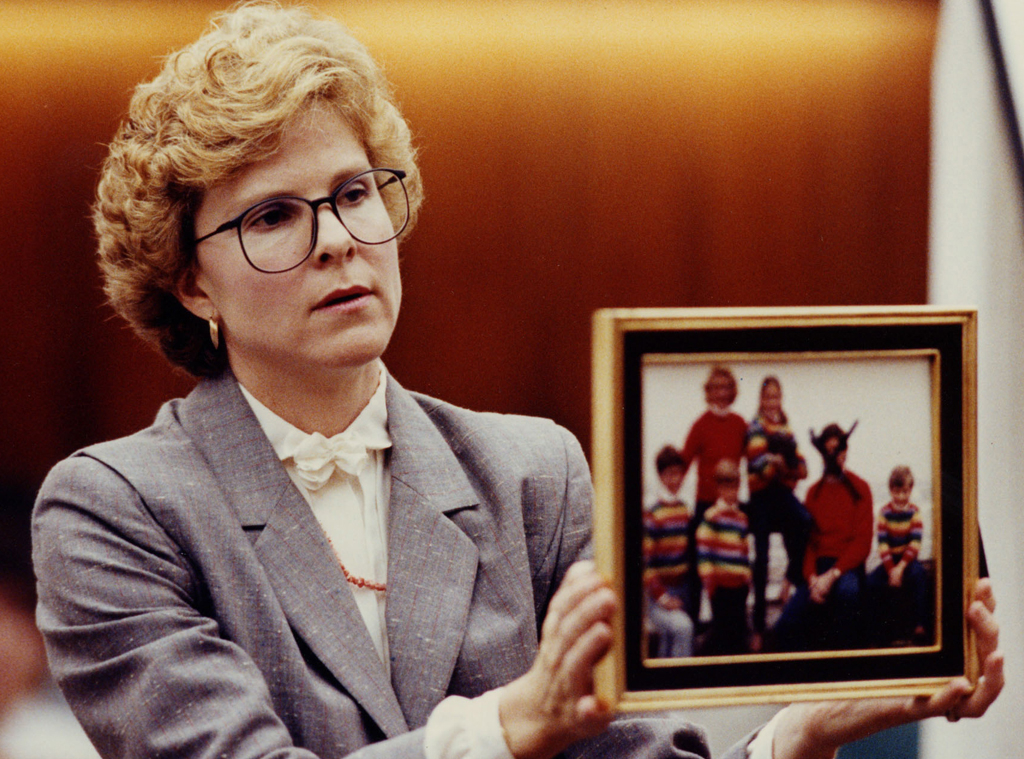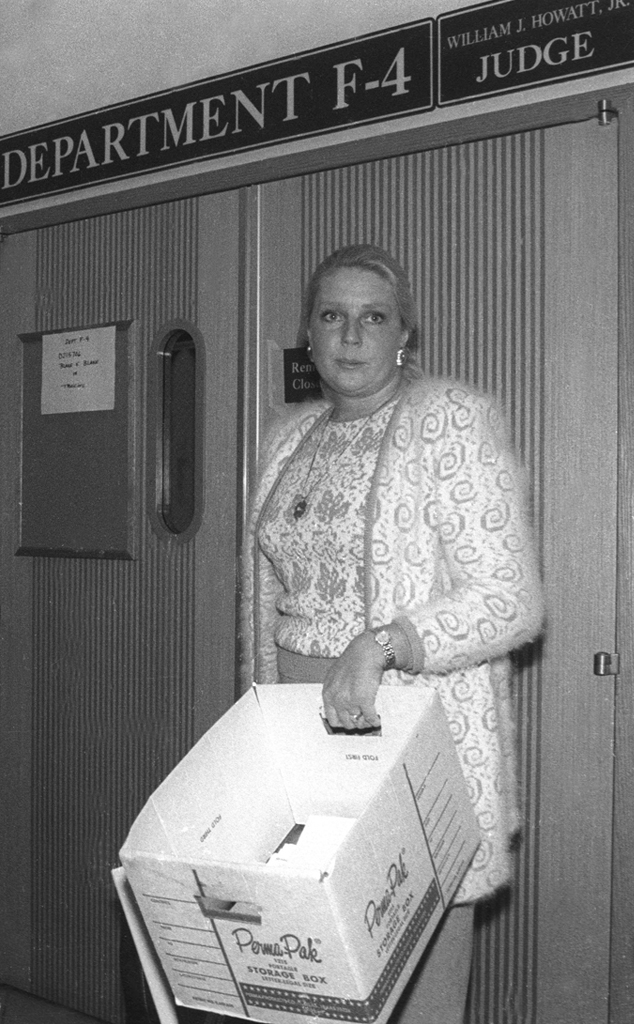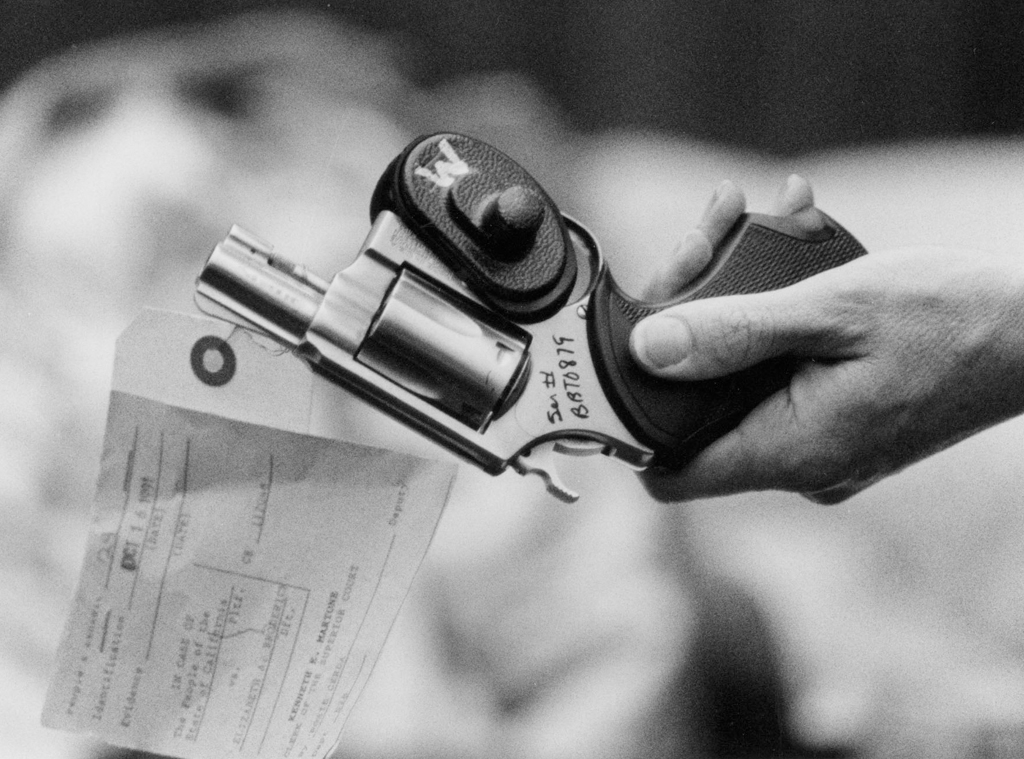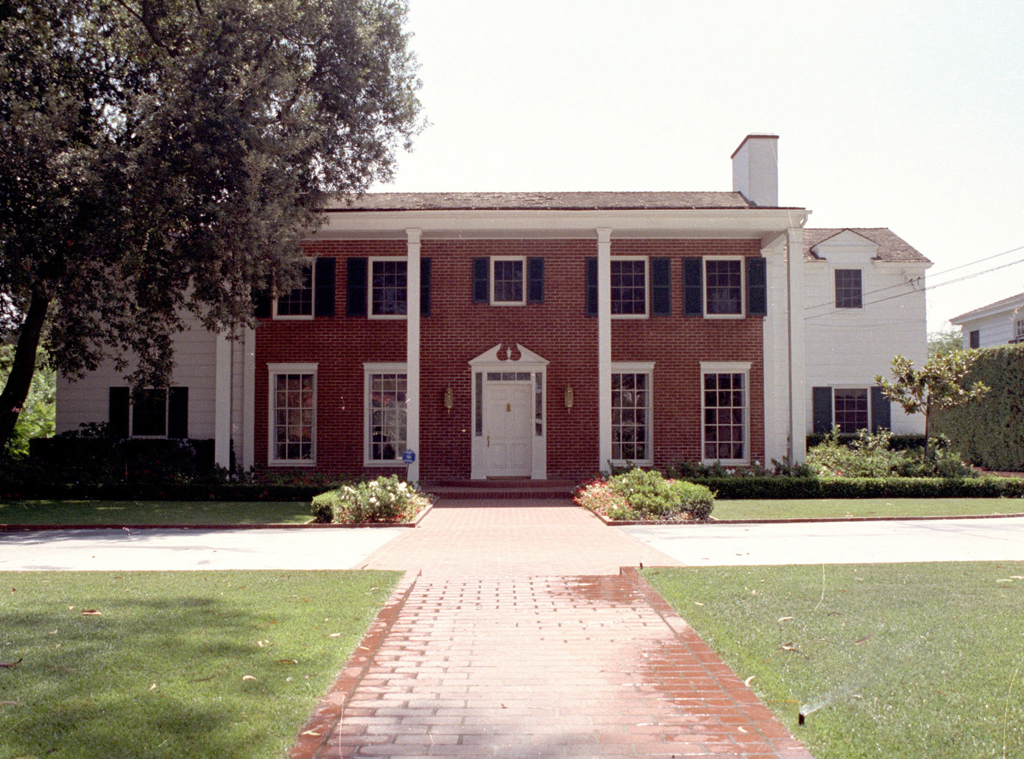
San Diego Union-Tribune/AP
Betty Broderick “remains an unreasonable risk of danger to society.”
So charged the prosecutor who successfully argued against Broderick’s most recent chance at parole in 2017. And she has her reasons.
When Broderick shot her ex-husband and his second wife to death in their bed in 1989, the reason for her actions became a hotly debated topic, not just between prosecutors and defense attorneys, but also among the countless people who savored every sordid detail of the scandalous case as it unfolded in real time.
Broderick never claimed to have not committed the double homicide, but she maintained that she was a long-suffering battered wife during the 16 years she spent married to Daniel Broderick III before he left her for another woman, and that she eventually snapped.
“She’s a nice lady. Everyone here would like her…if they spoke with her on any topic other than my dad,” Rhett Broderick, the youngest of Betty and Dan’s four children, said on The Oprah Winfrey Show. “Keeping her in prison isn’t really helping her. She’s not a danger to society—the only two people she was a danger to are dead.”
“She still has not developed appropriate insight or remorse for these gruesome murders, which she committed with a callous disregard for human suffering,” District Attorney Bonnie Dumanis said before Broderick’s hearing two years ago at the California Institute for Women in Corona, Calif. She was denied parole for the first time in 2010 and won’t be eligible again until 2032.
But if it were an easily explainable turn of fatal events, the Broderick saga wouldn’t be a case that has been revisited time and again, and which is now the subject of USA Network’s Dirty John: The Betty Broderick Story, starring Amanda Peet and Christian Slater as the unhappy couple. (The series’ first installment in 2018, about conman John Meehan, was on sister network Bravo.)
Back in the day, the Brodericks themselves were picture-perfect enough to be considered one of those enviable pairs on the cocktail party circuit in their luxurious enclave of La Jolla, Calif.

San Diego Union/U-T San Diego/ZUMAPRESS.com
Married since April 12, 1969, Dan and Betty were college sweethearts, having met at Notre Dame. Daughter Kim was born in 1970 and would be followed by daughter Lee in 1971 and sons Daniel in 1976 and Rhett in 1979. They lost their fifth child, a boy, who died two days after he was born.
When they were first starting out, Dan went to medical school at Cornell, after which he went to Harvard Law School to get his JD, moving his young family to Massachusetts. While he was still in school, Betty was the primary breadwinner and also took care of the children.
Fresh out of law school, Dan was hired by a firm in San Diego, Calif., and they moved to La Jolla, the oceanside community known for its big beachfront houses and golf courses, as well as being the home of the famed Salk Institute and Scripps Research medical center. Betty sold Tupperware and Avon products on the side, but was primarily a stay-at-home mom.
In 1982, Dan hired 21-year-old Linda Kolkena as a legal assistant, and it didn’t take long for Betty to suspect her husband was having an affair.
In 1985, he filed for divorce and left to be with Linda.

Joe Klein/ZUMAPRESS.com
Over the course of almost five years, the Brodericks’ acrimonious divorce proceedings became part of the local social fabric. Betty drove her car into Dan’s front door. She spray-painted the inside of the house they used to share, which she said he sold against her wishes. She would scribble out his name on court documents and write in “God.”
Dan ended up with primary custody of their children, and she insisted he used his influence in the local legal community against her. She also told the kids, whom she had with her every other weekend for visits, that she was going to kill their father.
Around the fall of 1987, Betty bought a gun.

Michael Franklin/U-T San Diego/ZUMAPRESS.com
On his end, Dan withheld arbitrary amounts of child support, obtained a restraining order against Betty, called the cops, had her committed to a mental hospital. Told her she’d regret it if she tried to kill him.
Yet Betty lived comfortably, in an ocean-view home near La Jolla Shores. Her personalized license plate read “LODEMUP.” She had a boyfriend and worked at an art gallery. Dan was paying $16,000 a month in alimony.
Meanwhile, Dan married Linda Kolkena on April 22, 1989, and they were living in Marston Hills, near downtown San Diego.
On Nov. 3, 1989, Dan told Betty he’d file a criminal complaint against her if she didn’t stop leaving obscene messages on his home phone.

Lillian Kossacoff/U-T San Diego/ZUMAPRESS.com
In the early morning hours of Nov. 5, before dawn, Betty got in her car, drove to Dan and Linda’s house, let herself in using her daughter’s key, and went upstairs, into the master bedroom.
Standing beside the bed, she emptied her five-chamber .38-caliber Smith & Wesson revolver. Three of the bullets hit the sleeping couple, killing Linda instantly and Dan within a few minutes, during which he attempted to reach for the phone but Betty quickly pulled the cord out of the wall.
Cold-blooded killer or mad as hell and she just couldn’t take it anymore, having devoted 16 years of her life to Dan, only to be dumped for a younger woman? Or, both.
San Diego society couples were torn, and the name “Betty Broderick” became synonymous with revenge that, while not condoned outright, was certainly understood and even sympathized with by some, particularly women.
But the law was more clear.
“Mental illness was not discussed enough,” Amanda Peet told E! News when asked what the wildest thing she learned about the story while making Dirty John: The Betty Broderick Story. “She really behaved in an abusive way for a long time and so did he. Hopefully in today’s day and age someone would have intervened.”
Peet didn’t meet Broderick behind bars, but she credited Alexandra Cunningham’s script for her fleshed-out portrayals of both Betty and Dan. She’s not “condoning or justifying,” the actress explained. But “it’s a story worth exploring why this happened, what were the components and factors that lead someone to becoming insane.”
Rhett, who was around 10 when his mom killed his dad, recalled waking up at Betty’s house on the morning of his father’s murder (her two sons were staying with her) and sensing when the police showed up that his mother had done something.
“I kind of suspected that my mom was getting into trouble,” he told Oprah Winfrey, who was granted the first prison interview with Broderick back in 1992. “Every time she went over to my dad’s house, he would immediately call the cops, and she’d be violating her restraining order. So that’s what I figured had happened.”
“On multiple occasions [my brother and I] went to my dad and said to him that we wanted to live with my mom, and that not having her kids was driving her crazy—and that she could do something extremely irrational if she didn’t have us,” Rhett recalled.

Howard Lipin/U-T San Diego/ZUMAPRESS.com
Betty has been behind bars since her arrest on Nov. 5, when after shooting Dan and Linda she called her daughter Lee and then turned herself in to local police.
The defense, headed up by attorney Jack Early, maintained that Betty had been a battered wife and an emotionally abused ex-wife, living in fear and driven to a desperate act of self-defense by Dan’s brutality.
Prosecutor Kerry Wells argued that Betty had been living a cushy life and was simply mad and humiliated, driven to take revenge by her own narcissism.
If Dan hadn’t acted as he had during the divorce, Betty told a Los Angeles Times Magazine reporter in 1990, three weeks after the killings, “I would’ve been fine. I would’ve had my house, my kids. I would’ve still worn a size 6. I could’ve done my ‘superior’ dance.”
She continued, “I have never had emotional disturbance or mental illness—except when he provoked a ‘disturbance.’ My ’emotional outbursts’ were only a response to Dan’s calculating, hateful way of dealing with our divorce. He was hammering into me and everyone else that I was crazy…How long can you live like that?”
The first trial ended in a hung jury when two jurors thought she should be convicted of manslaughter instead of murder, believing that the killings weren’t premeditated.
But the prosecution won guilty verdicts on two counts of murder at the retrial in 1991, and Betty was sentenced to 32 years to life in prison, 15 years to life for each victim, plus two years for illegal use of a firearm.
Law & Order ripped the case from the headlines that same year, guest-starring Shirley Knight as the woman who kills her ex-husband and his new wife. She was nominated for an Emmy. In 1992, Meredith Baxter-Birney was also nominated for an Emmy for her performance as Betty in the TV movie A Woman Scorned: The Betty Broderick Story, which was followed by Her Final Fury: Betty Broderick, the Last Chapter, which dramatized the trial, that November.
In addition to Dirty John, Oxygen’s Snapped will cover the case in an episode scheduled for July 15.
Asked why she thought the story has stayed so compelling for decades, Peet told E! News, “Part of the reason this story was worth retelling is because the social situation Betty grew up in in the ’50s was so repressed. Betty had intellectual promise but gave it up to be a mother, and as a result she suffered a really rude awakening. The fact that Dan was part of the good ol’ boys club of lawyers in San Diego, the cards were really stacked against Betty from the beginning.”
Dirty John: The Betty Broderick Story is on Tuesdays at 10/9c on USA Network.
(E! and USA are both members of the NBCUniversal family.)
